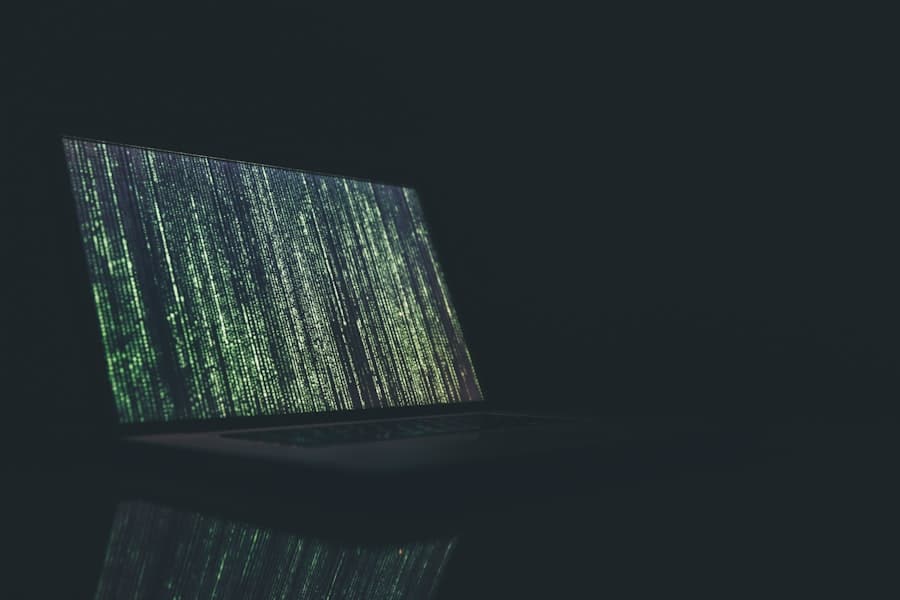The integration of Internet of Things (IoT) devices in healthcare has revolutionized patient care, enabling real-time monitoring, data collection, and improved operational efficiency. From wearable health monitors to smart hospital equipment, these devices have become integral to modern medical practices. However, as the reliance on IoT technology increases, so does the need for robust cybersecurity measures.
The healthcare sector is particularly vulnerable to cyber threats due to the sensitive nature of the data involved, including personal health information (PHI) and financial details. A breach in this sector can lead to dire consequences, not only for healthcare organizations but also for patients whose lives may depend on the integrity of these systems. The rise in cyberattacks targeting healthcare IoT devices has underscored the critical importance of cybersecurity in this domain.
High-profile incidents, such as the ransomware attack on the Universal Health Services in 2020, have highlighted how cybercriminals exploit vulnerabilities in connected devices to disrupt services and access sensitive data. As healthcare organizations increasingly adopt IoT solutions to enhance patient care and operational efficiency, they must also prioritize cybersecurity strategies to protect against potential threats. The stakes are high; a successful cyberattack can compromise patient safety, lead to financial losses, and damage the reputation of healthcare providers.
Key Takeaways
- Cybersecurity in healthcare IoT devices is becoming increasingly important due to the rise in connected medical devices and the potential risks associated with cyber attacks.
- Healthcare IoT devices are vulnerable to various cyber threats such as data breaches, malware, and ransomware, which can compromise patient data and even patient safety.
- Cybersecurity tools play a crucial role in protecting healthcare IoT devices by detecting and preventing cyber threats, as well as ensuring the integrity and confidentiality of patient data.
- Common cybersecurity tools used in healthcare IoT devices include firewalls, encryption, intrusion detection systems, and security information and event management (SIEM) solutions.
- The use of cybersecurity tools in healthcare IoT devices has a direct impact on patient safety by safeguarding medical devices from cyber attacks and ensuring the continuity of patient care.
The Vulnerabilities of Healthcare IoT Devices
Vulnerabilities in IoT Devices
For instance, many IoT devices use default passwords that are rarely changed by users, providing an easy entry point for hackers.
Each device represents a potential vulnerability that can be exploited if not properly managed.
The Need for Improved Security Measures
Manufacturers may prioritize getting their products to market quickly over implementing comprehensive security protocols. This can result in devices that are not only vulnerable at launch but also remain unpatched as new threats emerge. For example, a study by the Ponemon Institute found that 70% of healthcare organizations experienced at least one IoT-related security incident in the past year, highlighting the urgent need for improved security measures tailored specifically for these devices.
The Role of Cybersecurity Tools in Protecting Healthcare IoT Devices

Cybersecurity tools play a pivotal role in safeguarding healthcare IoT devices from potential threats. These tools are designed to detect vulnerabilities, monitor network traffic, and respond to incidents in real time. By implementing a multi-layered security approach that includes firewalls, intrusion detection systems (IDS), and encryption technologies, healthcare organizations can create a more secure environment for their IoT devices.
Additionally, cybersecurity tools can facilitate continuous monitoring and threat intelligence sharing among healthcare organizations. This proactive approach allows for the identification of emerging threats and vulnerabilities before they can be exploited.
Advanced analytics and machine learning algorithms can analyze patterns in network traffic to detect anomalies that may indicate a cyberattack. By leveraging these tools, healthcare providers can enhance their overall security posture and ensure that their IoT devices operate safely and effectively.
Common Cybersecurity Tools Used in Healthcare IoT Devices
Several cybersecurity tools are commonly employed to protect healthcare IoT devices from cyber threats. One of the most widely used tools is a network intrusion detection system (NIDS), which monitors network traffic for suspicious activity and alerts administrators to potential breaches. NIDS can be particularly effective in identifying unauthorized access attempts or unusual data transfers that may indicate a compromise.
Another essential tool is endpoint protection software, which secures individual devices connected to the network. This software can include antivirus programs, anti-malware solutions, and host-based intrusion prevention systems (HIPS). By ensuring that each device is protected against known threats, healthcare organizations can significantly reduce their risk exposure.
Encryption is also a critical component of cybersecurity for IoT devices. By encrypting data both at rest and in transit, healthcare providers can protect sensitive information from being intercepted or accessed by unauthorized individuals. This is especially important for devices that transmit patient data over wireless networks, where interception is a significant risk.
The Impact of Cybersecurity Tools on Patient Safety
The implementation of effective cybersecurity tools has a direct impact on patient safety within healthcare settings. When IoT devices are compromised, the consequences can be severe; for example, a hacked insulin pump could deliver incorrect dosages to a diabetic patient, leading to life-threatening situations. By employing robust cybersecurity measures, healthcare organizations can mitigate these risks and ensure that their devices function as intended without interference from malicious actors.
Moreover, the presence of strong cybersecurity protocols fosters trust between patients and healthcare providers. Patients are more likely to share sensitive information when they believe their data is secure from breaches. This trust is essential for effective patient-provider relationships and can lead to better health outcomes as patients feel more comfortable engaging with their healthcare providers about their conditions and treatment options.
Challenges in Implementing Cybersecurity Tools for Healthcare IoT Devices

Financial Constraints and Limited Resources
Many healthcare organizations struggle with budget constraints, limiting their ability to invest in advanced cybersecurity solutions. Smaller facilities, in particular, may find it difficult to allocate sufficient resources for comprehensive security measures, leaving them vulnerable to attacks.
Technical Challenges and Integration Issues
The complexity of integrating new cybersecurity tools with existing systems poses significant technical challenges. Healthcare IT departments must navigate compatibility issues and ensure that new solutions do not disrupt ongoing operations or patient care.
Ensuring Seamless Integration and Ongoing Operations
Healthcare organizations must carefully balance the need for robust cybersecurity with the need to maintain uninterrupted patient care and ongoing operations. By understanding these challenges, healthcare organizations can better prepare themselves to overcome the obstacles and effectively implement cybersecurity tools.
Future Trends in Cybersecurity for Healthcare IoT Devices
As the landscape of healthcare technology continues to evolve, several trends are emerging in the realm of cybersecurity for IoT devices. One notable trend is the increasing adoption of artificial intelligence (AI) and machine learning (ML) technologies to enhance threat detection and response capabilities. These technologies can analyze vast amounts of data in real time, identifying patterns that may indicate potential security breaches more quickly than traditional methods.
Another trend is the growing emphasis on regulatory compliance and standards development specific to healthcare IoT security. As awareness of cybersecurity risks increases among stakeholders, there is likely to be greater pressure on manufacturers and healthcare providers to adhere to stringent security protocols. This could lead to the establishment of industry-wide standards that ensure all IoT devices meet minimum security requirements before being deployed in clinical settings.
Finally, there is an increasing focus on user education and training as a critical component of cybersecurity strategy. Healthcare organizations are recognizing that human error remains one of the most significant vulnerabilities in cybersecurity. By providing ongoing training for staff on best practices for device security and data protection, organizations can create a culture of security awareness that extends beyond technology alone.
The Importance of Collaboration Between Healthcare Providers and Cybersecurity Experts
Collaboration between healthcare providers and cybersecurity experts is essential for developing effective strategies to protect IoT devices from cyber threats. Healthcare professionals possess valuable insights into the operational needs and challenges faced by their organizations, while cybersecurity experts bring specialized knowledge about emerging threats and best practices for mitigation. By working together, these two groups can create tailored solutions that address specific vulnerabilities within healthcare environments.
Furthermore, fostering partnerships with external cybersecurity firms can provide healthcare organizations with access to advanced tools and expertise that may not be available internally. These collaborations can facilitate knowledge sharing and help organizations stay ahead of evolving cyber threats. Regular assessments and audits conducted by cybersecurity professionals can identify weaknesses in existing systems and recommend improvements that enhance overall security posture.
In conclusion, as healthcare continues to embrace IoT technology, prioritizing cybersecurity will be paramount in ensuring patient safety and protecting sensitive data from cyber threats. The collaboration between healthcare providers and cybersecurity experts will play a crucial role in developing effective strategies that address vulnerabilities while fostering trust among patients and stakeholders alike.
There is a fascinating article on the new world of possibilities with the Samsung Galaxy Chromebook 2 360 that highlights the innovative features of this device. This article showcases how technology is constantly evolving to meet the needs of users in various industries, including healthcare. Just like cybersecurity tools are crucial for protecting healthcare IoT devices, advancements in devices like the Samsung Galaxy Chromebook 2 360 are shaping the future of digital healthcare.
FAQs
What are healthcare IoT devices?
Healthcare IoT devices are medical devices that are connected to the internet and can collect and transmit data. These devices include wearable fitness trackers, medical monitoring devices, and implantable medical devices.
Why is cybersecurity important for healthcare IoT devices?
Cybersecurity is important for healthcare IoT devices because these devices collect and transmit sensitive patient data. If these devices are not properly secured, they can be vulnerable to cyber attacks, leading to potential data breaches and patient safety risks.
What are some common cybersecurity threats to healthcare IoT devices?
Common cybersecurity threats to healthcare IoT devices include malware, ransomware, unauthorized access, and data breaches. These threats can compromise the integrity, confidentiality, and availability of patient data and device functionality.
How do cybersecurity tools protect healthcare IoT devices?
Cybersecurity tools such as firewalls, encryption, intrusion detection systems, and network monitoring can help protect healthcare IoT devices by detecting and preventing unauthorized access, malware, and other cyber threats. These tools also help ensure the secure transmission and storage of patient data.
What are some best practices for securing healthcare IoT devices?
Best practices for securing healthcare IoT devices include regularly updating device firmware and software, implementing strong access controls, conducting regular security assessments, and providing cybersecurity training for healthcare staff. Additionally, organizations should have a response plan in place in the event of a cybersecurity incident.

